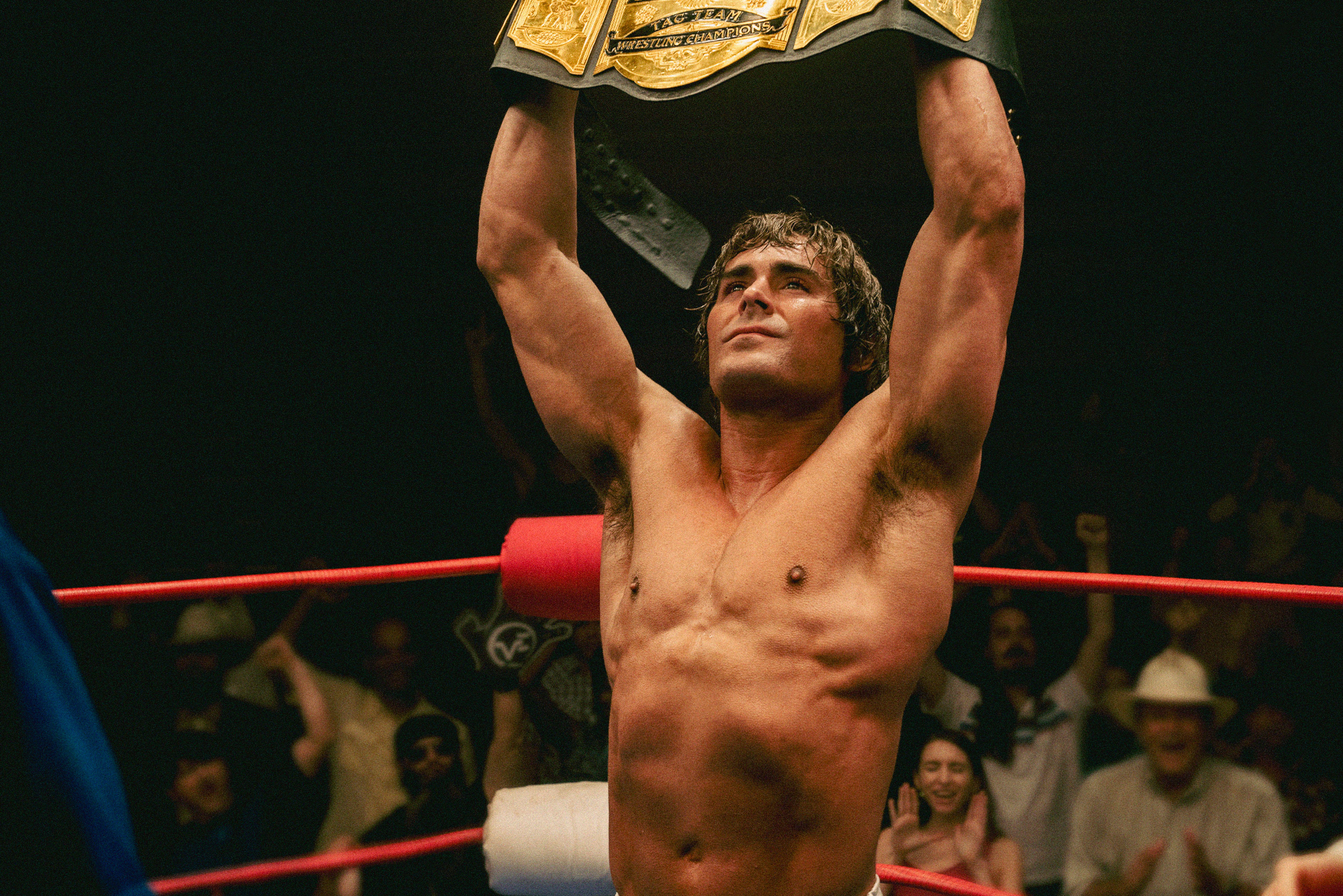
Zac Efron has trained hard and packed on some impressive muscle in recent years. But for his latest movie, The Iron Claw, the actor had to step things up again and "get into the shape of his life" to play real-life wrestler Kevin Von Erich.
The film details Von Erich's challenging ascent to the top of the professional wrestling world during the industry's '80s Golden Era, and while it tackles some profound dramatic themes, we couldn't help but notice Efron's transformed physique.
Of course, it's not as simple as working out with a set of adjustable dumbbells every day, and, in the past, Efron has shared how unrealistic these visually impressive transformations are to maintain, especially if you're not a celebrity with access to personal trainers chefs.
But that doesn't mean you can't build muscular arms safely and sustainably. We spoke to Nick Mitchell, a personal trainer and founder of body transformation experts Ultimate Performance to get you started on the path towards Efron-esque muscle.
What does it take to get arms as big as Efron’s?

Wanting bigger arms is a pretty common goal for many people. “Almost every male client I’ve ever trained (I’ve been in this business for more years than I care to remember) has wanted big biceps,” Mitchell says.
It’s no surprise why. Big, peaked biceps have been a body part many have desired at some point. “Perhaps unfairly – [biceps] are often the first thing people are drawn to, judged upon, or commented on,” says Mitchell.
However, he's not a fan of "ego training", where people "stand in front of the mirror, with no regard for proper form or execution, and literally swinging their hips to generate enough momentum to curl weights that are far too heavy for them.”
Sign up to get the BEST of Tom's Guide direct to your inbox.
Get instant access to breaking news, the hottest reviews, great deals and helpful tips.
But the solution is to switch an intense focus on biceps curls for a more balanced routine, explains Mitchell. “It takes an extra 10-15lb of overall lean body weight to add an inch to the circumference of your arms...You won’t get arms that are the envy of your gym unless you train the rest of your body.”
The real trick to add size to your arms and bigger biceps is to work your whole body with a balanced program and dedicate between one and two sessions out of four sessions-a-week program to your arms. This is the first rule for anyone attempting to grow their arms.
Even when you dedicate time to your arms, it's important to remember that there's more to muscular arms than your biceps alone. The triceps play a vital role too, and make up around two-thirds of arm circumference.
Compound moves are key
Biceps curls as a classic form of isolation exercise, where the aim is to focus on a single area. However, compound exercises, which work multiple muscles simultaneously, maybe a more effective way to build stronger arms.
“I would dedicate two sessions a week to full-body compound moves (splitting between an upper body and a lower body session is a good idea here) like those I’ve described and between one and two sessions dedicated to arms-specific moves,” says Mitchell.
And so, getting strong on compound lifts like the bench press, the military press, deadlift, dips, chin-ups, and the squat will help contribute to more overall muscle mass, which will help drive overall body weight up, and help make your arms bigger.
11-move full-body workout to build stronger arms
Mitchell has revealed “maximal mechanical damage hypertrophy workout”, which he says has worked wonders with some of his clients to build stronger arms and that you "can curse my name when you feel the next day’s soreness!”
The workout involves 11 whole-body exercises, grouped into five supersets (exercises performed back to back) to target different muscle groups including a focus on the arms but with the same goal: to grow those guns.
It's an effective routine for building stronger arms as all of the moves — except for the finisher — are based around the principles of antagonistic supersets, explains Mitchell.
“Antagonistic supersets means alternating exercises that target opposing muscle groups, like chest and back, quads and hamstrings, or, in this case, the biceps and triceps,” he says.
“By pairing two opposing muscle groups together, you’ll always be able to do more work in a shorter time when compared to just straight sets,” making it an efficient way to hit your goals, even when you're tight on time.
11-move routine for bigger arms
| Exercise | Sets | Reps | Tempo | Rest |
| 1a: EZ-bar preacher curl | 4 | 6 | 5010 | 90 secs |
| 1b: Close-grip bench press | 4 | 6 | 5010 | 90 secs |
| 2a: 45-degree dumbbell curl | 3 | 10 | 3010 | 0 secs |
| 2b: Incline dumbbell triceps extension | 3 | 10 | 3010 | 90 secs |
| 3a: Reverse incline hammer curl | 3 | 12 | 4010 | 0 secs |
| 3b: Dumbbell skull crusher | 3 | 12 | 3010 | 90 secs |
| 4a: Triceps dip | 1 | 30secs lower | - | 90 sec |
| 4b: Hammer-grip chin-up | 1 | 30secs lower | - | 90 secs |
| 5a: Dumbbell wrist curl | 3 | 15 | 2010 | 0 secs |
| 5b: Cable wrist curl | 3 | 15 | 2011 | 0 secs |
| 5c: Behind back barbell wrist curl | 3 | 15 | 2011 | 90 secs |
Mitchell's top tips for bigger arms
It's crucial to always do each exercise with proper form to get the most from your training and avoid injury. For most of the workout, Mitchell recommends aiming for 3 seconds of time under tension for each move.
That also means lifting a weight that'll challenge your muscles, but won't affect your form. “Don’t sacrifice form by letting your ego get in the way. If you have to lighten the load, so be it,” he explains.
“You will be putting your biceps and triceps under sustained tension,” he says. “Increasing the time a muscle spends under tension is one of the most effective ways to achieve hypertrophy."
This way, you can focus on your range of motion to better activate the biceps and triceps. According to Mitchell, “full range of motion training will always produce better results than partial range."
He also suggests briefly pausing at the top of the rep to squeeze the target muscle in its lengthened position. For example, when your arms are straight after a biceps curl or a skull crusher.
“Filling the muscle with blood in this way will increase the muscle’s hypertrophic capability,” he says. It'll be a challenge, but don't rush. “Milk every rep. Your arms should be on fire by the finisher.”
More from Tom's Guide
Lee Bell is a freelance journalist and copywriter specialising in technology, health and fitness and how the latest innovations are shaking up the lifestyle space. From national newspapers to specialist-interest magazines and digital titles, Lee has written for some of the world’s most respected publications during his 12-plus years as a journalist.

